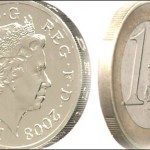Australian dollar came off fresh three-month highs against the US dollar on trading Friday, after official data revealed that employers in US non-farm sector added more jobs than initially projected in February.
Having touched a new daily high at 0.9134 at 13:12 GMT, also the highest level since December 11th, AUD/USD lost ground to close at 0.9070 on Friday, slipping 0.22% for the day. The pair trimmed its weekly gain to 1.59%, after in February it appreciated 1.9%, which has been the largest advance in the past five months. Support was likely to be found at 0.9000, while resistance was to be encountered at December 11th high, 0.9152.
Employment in United States non-farm sector increased at a faster than expected pace in February, after it demonstrated a moderate growth in the recent months, which suggested signs of improvement in nations labor market, despite that the overall rate of unemployment still remained high and also despite concerns that severe weather conditions slowed down economic growth.
Employers in the country managed to add 175 000 new job positions in February, while preliminary estimates pointed to a lesser gain in jobs, 149 000. In January non-farm payrolls have been revised up to 129 000 from 113 000 previously.
The rate of unemployment, on the other hand, increased to 6.7% last month from 6.6% in January, due to an expansion in nations work force. Experts had anticipated that the jobless rate will remain unchanged in February.
The abovementioned employment data urged traders to revise their expectations of the timing of a possible increase in borrowing costs by the Federal Reserve Bank, according to CME Group. Traders now see a 52% probability that the central bank may raise its benchmark interest rate at its policy meeting in June 2015, or one meeting earlier in comparison with before the release of the non-farm payrolls report.
At the same time, the deficit on United States trade balance widened insignificantly to reach 39.1 billion USD in January, after in December the deficit figure has been revised to 38.975 billion USD from 38.701 billion USD previously. Analysts had anticipated a deficit at the amount of 38.500 billion USD in January.
Factors behind this wider deficit have been the weaker fuel export and the increased import of oil. A larger trade deficit usually cause an adverse impact upon economic growth. Imports rose 0.6% to reach 231.6 billion USD in January, while overall export increased also 0.6% to reach 192.5 billion USD during the same month.
Meanwhile, in a statement taken on Friday Reserve Bank of Australia Governor Glenn Stevens said that the exchange rate of the Aussie was high by historical standards, something which has been noted in bank’s policy statement from its meeting on March 4th.
The Australian dollar recorded gains in February, after the central bank indicated a period of steady interest rates and its intention not to verbally influence the exchange rate of the national currency. In the current month the Aussie continued its advance, despite Stevens’ remarks of currency’s strength. Yesterday he also said that an exchange rate of the Aussie above 90 US cents exceeded central bank’s estimate.
In the week ahead investors attention will be focused on the US report on retail sales, scheduled for release on March 13th, and also on the report, encompassing producer prices in the United States, scheduled to be released on March 14th.
AUD/USD may be influenced by a number of reports/events, scheduled during the upcoming week as follows:
On Monday (March 10th) Federal Reserve President for Philadelphia Charles Plosser is expected to take a statement at 11:15 GMT.
On Tuesday (March 11th) the National Australia Bank (NAB) will announce the results from its monthly survey on business confidence in Australia during February.
On Wednesday (March 12th) Westpac Banking Corp. – Melbourne Institute will announce the results from their survey on consumer confidence in Australia during March. This report will be followed by data regarding home and investment lending in the country during January.
On Thursday (March 13th) the Melbourne Institute is expected to publish the results from its survey in March, focused on consumers inflationary expectations during the next 12 months. The report will be followed by data on the change in employment and the unemployment rate in Australia for February.
At 12:30 GMT the Census Bureau in the United States is expected to release its report on retail sales in February, an indicator providing clues over the tendency in consumer spending in the country. This report will be accompanied by weekly data on the number of initial jobless claims in the United States, an indicator for lay-offs.
On Friday (March 14th) the United States is to release data, regarding producer prices in February, which serve as an early indication for the performance of the consumer price index in the country.
At 13:55 GMT Thomson Reuters in cooperation with the University of Michigan will announce the preliminary reading of their index of consumer confidence in the United States for March, which usually comes out two weeks ahead of the final data.





